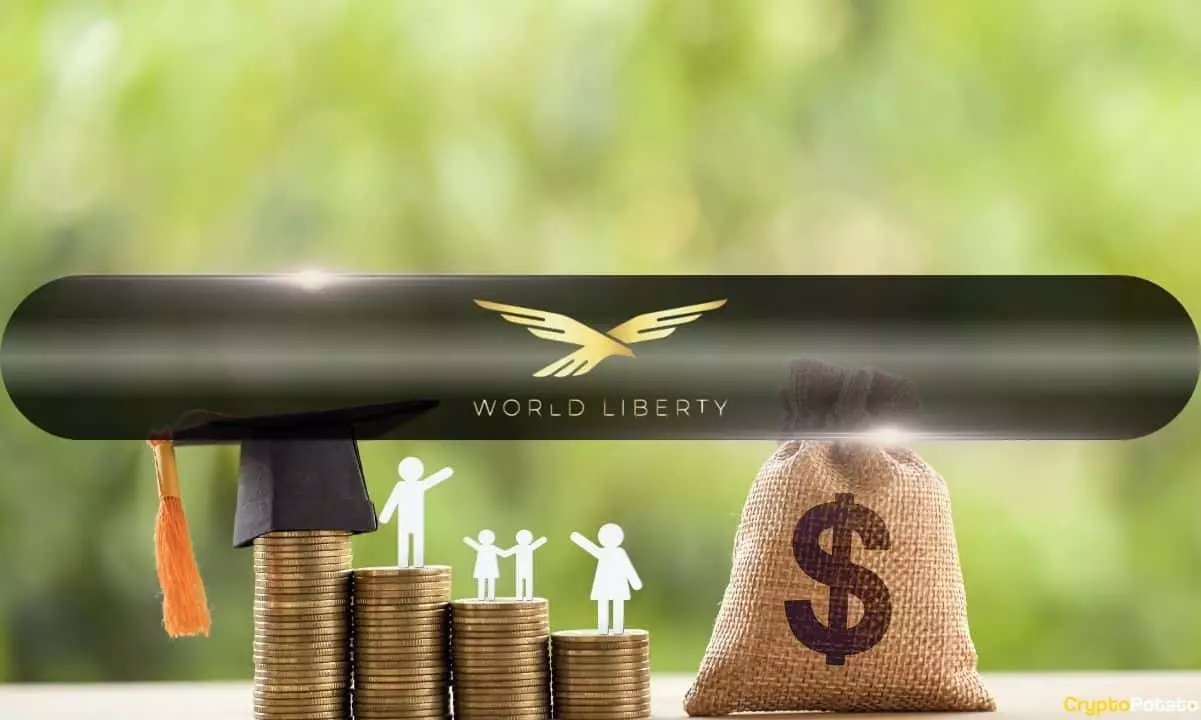The buzz surrounding World Liberty Financial (WLF), a decentralized finance (DeFi) protocol with high-profile backing from Donald Trump, has captured the attention of the cryptocurrency community. As the project launched its public token sale, the initial results revealed both excitement and challenges that prompt a deeper reflection on its future prospects. The expectation surrounding financial proceeds was high, and while the first day saw an influx of approximately $11.49 million, this only accounted for a small fraction of the ambitious $300 million target.
On the first day of the sale, approximately 766 million WLFI tokens were sold at a cost of $0.015 each, totaling around $11.49 million. Despite this apparent success, a critical lens reveals that this constitutes a mere 3.8% of the overall fundraising goal. Such figures might elicit concern among stakeholders, particularly when contrasted with earlier projections that anticipated a fully diluted market capitalization of $1.5 billion. Compounding the issue, the project’s website experienced intermittent downtime as the sale went live, which could deter potential investors and undermine confidence at a sensitive time.
Prior to the sale, co-founder Zak Folkman accentuated interest in the project, noting that over 100,000 individuals had signed up for the whitelist. However, following the sale, blockchain analytics revealed only 8,699 unique wallet addresses had purchased WLFI tokens. This discrepancy raises several questions about the actual demand for the tokens and may reflect a disconnect between initial enthusiasm and investment commitment.
The launch’s timing amid the U.S. presidential election has not gone unnoticed, attracting criticism directed at Trump for entering the cryptocurrency space during a politically charged moment. Many argue that the focus should be on pressing political matters rather than a new financial venture. Such criticism may dampen investor sentiment, particularly among those who view the project as a potential distraction from pressing civic responsibilities.
The WLF’s roadmap outlines a strategic distribution protocol for WLFI tokens: 63% for public sale, 17% for user rewards, and 20% for team compensation. Additionally, the WLFI token is conceptualized as a governance token, granting holders a say in the platform’s direction. However, a significant binding condition is the one-year lock-up period during which investors cannot transfer their tokens, potentially leading to liquidity issues in the early stages.
As the project gears up for a phased rollout, starting with a decentralized lending platform and the subsequent integration with exchanges, there remains a crucial need for transparency and clarity in its operational methods and compliance with regulatory frameworks.
The initial performance of the World Liberty Financial token sale stands at a crossroads. While there exists a foundation of interest, the road ahead requires addressing the gap between initial enthusiasm and genuine investment. Enhancing transparency, fostering community engagement, and addressing criticisms will be pivotal as WLF strives to navigate the complexities of the DeFi landscape. As the project unfolds, the commitment to accountable governance and effective communication will be vital in garnering broader support from the cryptocurrency community and beyond.
















Leave a Reply